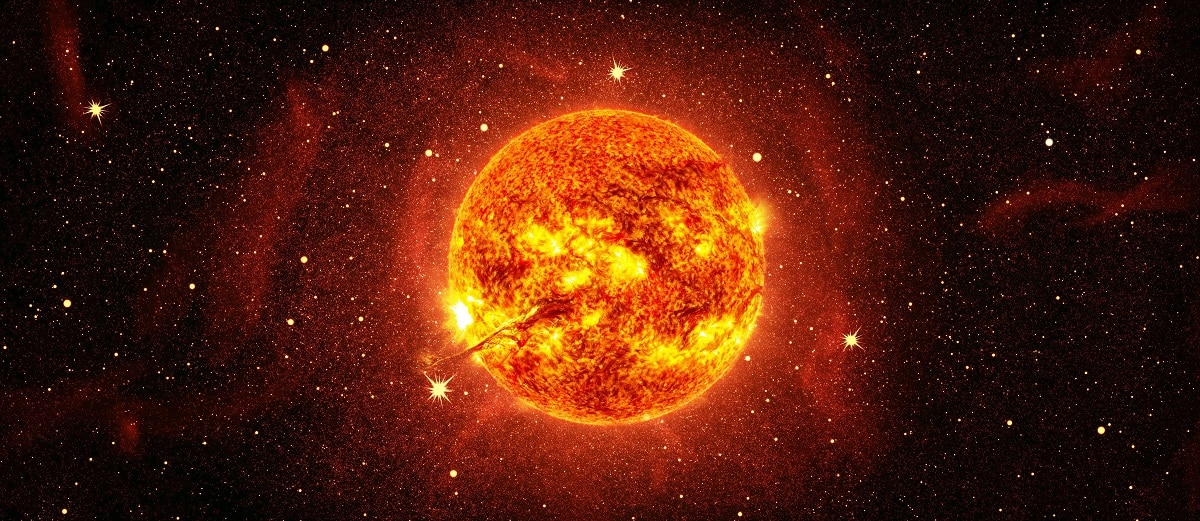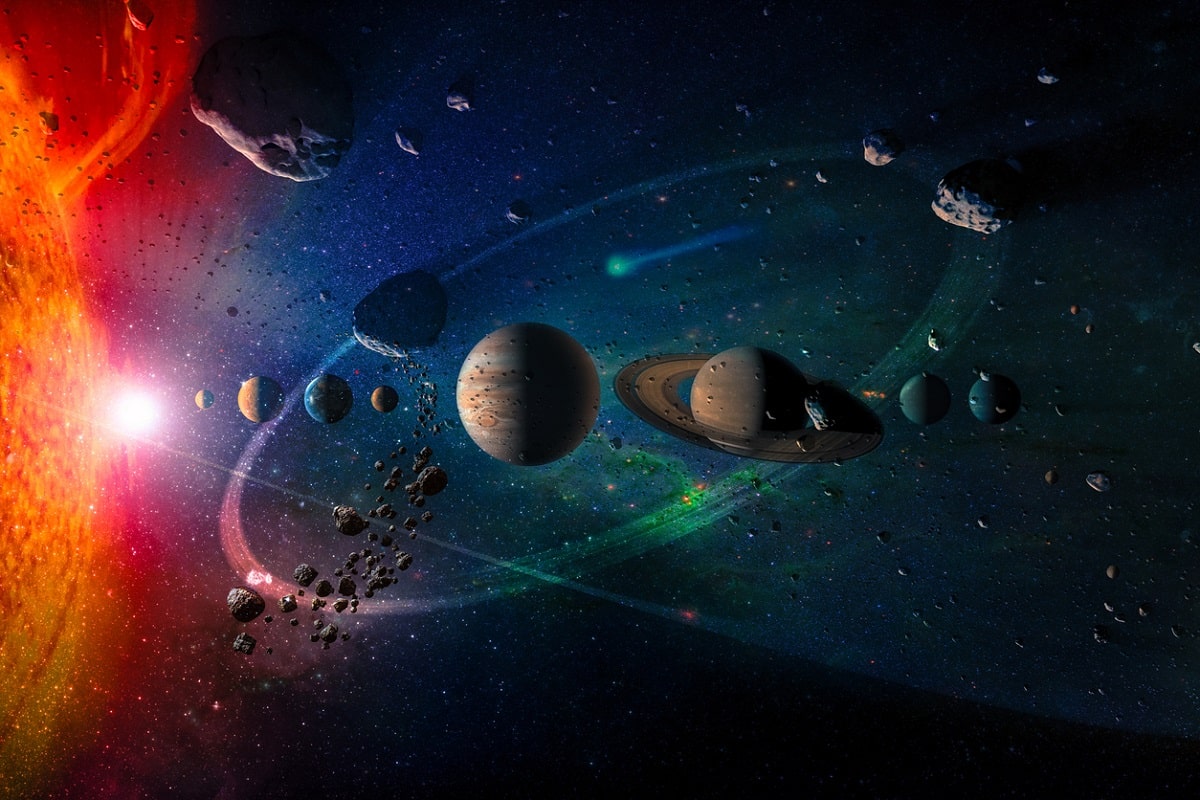
Thanks to the sun we can have life on our planet. The earth is in a zone called the habitable zone in which, thanks to the distance from the sun, we can add life. However, scientists have always questioned when did the sun form and from there how the solar system that we have today was generated.
In this article we are going to tell you when the sun was formed, its characteristics and importance.
What is the sun

We call the sun the closest star to our planet (149,6 million km). All the planets in the solar system orbit it, attracted by its gravity, and the comets and asteroids that accompany them. The Sun is a fairly common star in our galaxy, that is, it does not stand out for being much larger or smaller than other stars.
It is a G2 yellow dwarf going through the main sequence of its life. It is located in a spiral arm on the outskirts of the Milky Way, about 26.000 light years from its center. It is large enough to account for 99% of the mass of the solar system, or 743 times the mass of all the planets of the same planet combined (about 330.000 times the mass of Earth).
The sun, on the other hand, It has a diameter of 1,4 million kilometers and is the largest and brightest object in Earth's sky., his presence distinguishes day from night. Due to its constant emission of electromagnetic radiation (including perceived light), our planet receives heat and light, making life possible.
When was the Sun formed?

Like all stars, the Sun formed from gas and other matter that was part of a cloud of large molecules. The cloud collapsed under its own gravity 4.600 billion years ago. The entire solar system comes from the same cloud.
Eventually, the gaseous matter becomes so dense that it triggers a nuclear reaction that "ignites" the core of the star. This is the most common formation process for these objects.
As the sun's hydrogen is consumed, it is converted to helium. The Sun is a giant ball of plasma, almost completely circular, composed mainly of hydrogen (74,9%) and helium (23,8%). In addition, it contains trace elements (2%) such as oxygen, carbon, neon and iron.
Hydrogen, the sun's combustible material, converts to helium when consumed, leaving a layer of "helium ash." This layer will increase as the star completes its main life cycle.
Structure and characteristics

The core occupies one fifth of the structure of the sun. The sun is spherical and slightly flattened at the poles due to its rotational motion. Its physical balance (hydrostatic force) is due to the internal counterweight of the enormous gravitational force that gives it its mass and the thrust of the internal explosion. This explosion is produced by the nuclear reaction of the massive fusion of hydrogen.
It is structured in layers, like an onion. These layers are:
- Core. The innermost area. It occupies one fifth of the star and has a total radius of about 139.000 km. This is where a huge atomic explosion took place on the sun. The gravitational pull in the core is so strong that the energy generated in this way would take a million years to rise to the surface.
- Radiant zone. It is made up of plasma (helium and ionized hydrogen). This area allows the sun's internal energy to easily radiate outward, greatly reducing the temperature in this area.
- convection zone. In this region, the gas is no longer ionized, so it is more difficult for energy (photons) to escape to the outside and must be done by thermal convection. This means that the fluid heats unevenly, causing expansion, loss of density, and rising and falling currents, just like tides.
- Photosphere. This is the region that emits visible light from the sun. They are believed to be bright grains on the darker surface, although it is a light layer about 100 to 200 kilometers deep that is believed to be the surface of the Sun. Sunspots, due to the creation of matter in the star itself.
- Chromosphere. The outer layer of the photosphere itself is more translucent and harder to see because it is obscured by the glow of the previous layer. It measures about 10.000 kilometers in diameter, and during a solar eclipse it can be seen with a reddish hue on the outside.
- Sun crown. These are the thinnest layers of the outer solar atmosphere and are significantly warmer compared to the innermost layers. This is one of the unsolved mysteries of the nature of the sun. There is a low density of matter and an intense magnetic field, through which energy and matter travel at very high speeds. In addition, it is the source of many X-rays.
sun temperature
The sun's temperature varies by region and is very high in all regions. In its core temperatures close to 1,36 x 106 Kelvin (around 15 million degrees Celsius) can be recorded, while on the surface it falls to around 5778 K (around 5505 °C) and then back on top at 1 or 2 Rise x 105 Kelvin.
The sun emits a lot of electromagnetic radiation, some of which can be seen as sunlight. This light has a power range of 1368 W/m2 and a distance of one astronomical unit (AU), which is the distance from Earth to the sun.
This energy is attenuated by the planet's atmosphere, allowing about 1000 W/m2 to pass through at bright noon. Sunlight is made up of 50% infrared light, 40% light from the visible spectrum, and 10% ultraviolet light.
As you can see, it is thanks to this medium star that we can have life on our planet. I hope that with this information you can learn more about when the sun was formed and its characteristics.
Excellent topic, as always they are very accurate with the knowledge they give us, particularly all the contents related to the Universe are my favorites. Greetings